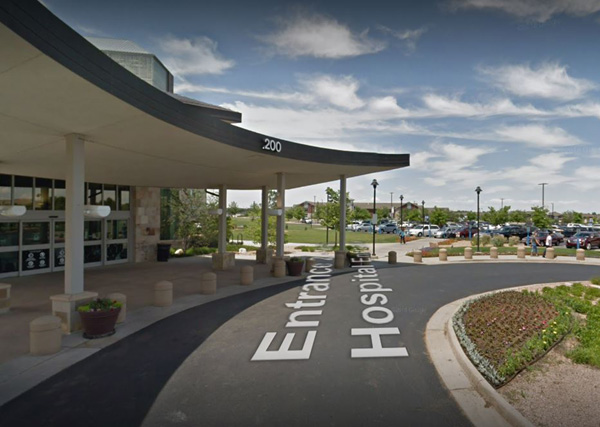Five Steps for Attainable New Year's Resolutions
Intermountain Health Good Samaritan Hospital
Jan 04, 2023
Colorado - Boulder County
Other Articles You May Like
Heart-Healthy Eating for Seniors
Maintaining heart health becomes increasingly necessary as we get older. Throughout our lives, our hearts work tirelessly to support our bodies. In our senior years, it becomes dire that we provide them with the best care possible. A well-balanced diet keeps our hearts healthy. Learn to choose the right foods that can help manage weight, improve cholesterol levels, and lower blood pressure.The Need for Heart-Healthy NutritionTo maintain heart health, certain nutrients are particularly beneficial. Omega-3 fatty acids, commonly found in fatty fish, are great for reducing inflammation and lowering heart disease risk. Fiber, abundant in whole grains and fruits, helps regulate cholesterol levels. Antioxidants, present in various fruits and vegetables, combat damage in the body caused by free radicals. A balanced diet rich in these nutrients can significantly benefit seniors, helping to maintain both heart health and overall well-being. However, seniors often face dietary challenges, such as decreased appetite, culinary limitations, or restricted access to fresh groceries, making it necessary to find helpful ways to incorporate them into the diet.Specific Heart-Healthy Foods to EatIncorporating foods rich in essential nutrients can strengthen heart health. Fatty fishlike salmon and mackerel are excellent sources of omega-3 fatty acids, supporting heart function. Whole grains, such as oats and brown rice, are packed with fiber, aiding in maintaining healthy cholesterol levels. Fruits and vegetables are rich in antioxidants and fiber, making them indispensable to a heart-healthy diet. When shopping, choose fresh, vibrant produce and whole foods. Farmers' markets or grocery stores in the Fort Collins area often have seasonal fruits and vegetables that are both fresh and affordable.Easy Heart-Healthy RecipesAdding heart-healthy foods to your diet doesn't have to be complicated. Below are some simple and nutritious recipes to get started:Salmon Salad: Mix canned salmon with a bit of olive oil, lemon juice, and a pinch of salt. Add diced cucumber, tomatoes, and a handful of spinach. Serve on whole-grain bread for a quick, nutrient-rich meal.Oatmeal With Berries: Cook oats in water or milk. Top with fresh or frozen berries and a sprinkle of nuts for a fiber-packed breakfast.Vegetable Stir-Fry: Saut your favorite vegetables like bell peppers, broccoli, and carrots in a bit of olive oil. Add tofu or chicken for protein and serve over brown rice.These recipes are designed to be straightforward, requiring minimal preparation and cooking skills. Planning meals in advance can also help seniors or their caregivers prepare heart-healthy dishes throughout the week.Tips for Incorporating Heart-Healthy FoodsGradually introducing heart-healthy foods is a manageable way to transform your diet. Swap processed snacks for fresh fruits or nuts, and focus on balanced, smaller portions. Practice mindful eatingtake your time while eating to aid digestion and increase satisfaction. When dining out, opt for grilled, baked, or steamed options, and ask for dressings and sauces on the side to manage portion sizes and sodium intake.Building Heart-Healthy Habits for the FutureAdopting heart-healthy eating habits doesnt have to be overwhelming. With simple changes, seniors can significantly improve their heart health and overall vitality. Choosing nutrient-rich foods and sticking to manageable meal plans can make a lasting difference in well-being.At Senior Helpers Greeley, we are committed to assisting seniors and their families in adopting heart-healthy habits. If you reside near Loveland, Fort Collins, Estes Park, Wellington, or Windsor, contact us for personalized advice and support on maintaining a heart-friendly diet. Let's work together for a healthier heart and a healthier life! For more information, please call 970-344-9486.
Do Older Adults Really Smell Different?
Odor its a touchy subject, especially when it comes to the scents that may be associated with humans and the aging process. Some have asked the question: Do older people really smell different?As it turns out, a significant amount of research has been done on the subject with mixed conclusions.What You Need to Know About NonenalSometimes when visiting senior care facility or an older adults home, you may notice a musty, grassy, or greasy odor. While some have inaccurately linked this scent with poor hygiene, scientists have another name for it: nonenal. It is a researched condition that could be connected to the aging process.According to a study published by the Journal of Investigative Dermatology, nonenal is a chemical compound that is produced when omega-7 unsaturated fatty acids on the skin are degraded through oxidation. Around age 40 in both men and women, as the skin begins producing more fatty acids, its natural antioxidant defenses begin to deteriorate. Hormonal changes like menopause in women can contribute to this chemical process as well.Not Everyone AgreesIn a New York Times column, essayist Ann Bauer discovered disagreement among researchers about this issue. Bauer noted that in 2001, Japanese researchers first discovered this unsaturated aldehyde called 2-nonenal that is more concentrated on the skin of older people.The Japanese study was confirmed by Johan Lundstrom, who used study samples from the underarms of people from the ages of 20 to 95 and presented them to 41 participants who ranked them on intensity and unpleasantness. Dr. Lundstrom and his co-authors found that participants were able to correctly assign age labels to body odors originating from old-age donors, but not to body odors originating from other age groups.But George Preti, a 74-year-old analytical organic chemist, says his studies did not match the results found by either the Japanese group or Dr. Lundstroms team. Dr. Pretis team used upper back and forearm samples and submitted them to gas chromatography and mass spectrometry, concluding that no method of analysis revealed the presence of 2-nonenal in older subjects.Old people actually smell less than younger ones, Dr. Preti said. Unless you go to a nursing home, where there are hygiene issues in the mix, youre not going to find this musty, unpleasant odor everyone is talking about.The scientists do agree that people with chronic diseases are more likely to give off odor no matter what their age, according to Bauer. Dr. Preti attributed this more to diet, metabolism, and self-care. Dr. Lundstrom credited the possibility which he is in the process of investigating that ongoing inflammation leads to odorous cell decay.Tips to Keep Things FreshRegardless of what causes scents around older adults and their homes, experts do agree that there are ways to keep aging adults and their houses smelling fresh.Keep fresh air flowing through the house.Open windows periodically to let clean air in. Good ventilation can help prevent stale air from hanging around a house.Clean the House.Check the home for spoiled or expired food and ensure bedding is regularly washed. Wash clothing after each wearing and air out shoes. Use these tips to keep a senior's house clean and address hoarding if that's an issue. Practice good bodily and dental hygiene.Floss and brush teeth, gums, and tongue daily, and follow guidelines for proper denture care. Make sure that bathing is happening several times a week. Encourage sponge baths on those days when a full shower isn't scheduled. Hydrate.Drinking plenty of water can help cleanse the body of odor. Refresh and repack old items.Old clothing and paper can carry a musty smell. Wash clothing, then store between dryer sheets. Put dried lavender in breathable cotton or linen bags and add them to storage containers. Set an open box of baking soda on closet floors or hang a bag of cedar chops in closets. It may be difficult for some older adults to follow the healthy routines mentioned above if they are dealing with illness or other issues. Know the signs that an aging adult may need more help around the house.
Honoring ALS Awareness Month: Walking Alongside Families Facing ALS
May is ALS Awareness Montha time to reflect, educate, and come together in support of individuals and families facing this devastating diagnosis. ALS, or Amyotrophic Lateral Sclerosis, is a progressive neurodegenerative disease that primarily attacks motor neurons, eventually affecting a persons ability to move, speak, eat, and breathe. While many with ALS retain their cognitive abilities, nearly half experience some cognitive or behavioral changes, and about 15% go on to develop frontotemporal dementia.An ALS diagnosis doesnt just affect the person receiving itit impacts every aspect of life for the entire family. It can feel as if the ground has shifted beneath your feet. Suddenly, there are medical terms to understand, specialists to visit, equipment to secure, and difficult decisions to make. Its a journey no one should have to walk alone. Thats where Premier Care Management of Florida comes in.As Care Managers, we become guides, advocates, and constant sources of support. Our role is to help families make sense of the chaos, to bring calm and clarity to the overwhelming. We coordinate care across providers, connect families with trusted resources, and gently walk them through the stages ahead. We help put plans in placewhether its advance care planning or finding the right adaptive equipmentso that clients and their loved ones can focus on what matters most: spending meaningful time together.Weve sat with families as they heard the diagnosis for the first time. Weve helped spouses navigate the growing weight of caregiving. Weve advocated for treatments, scheduled in-home care, and been a steady presence during hospital stays. And most importantly, weve witnessed the strength, love, and resilience that define the ALS community.At Premier Care Management of Florida, we understand that every ALS journey is unique, and every person deserves care that honors their dignity, their wishes, and their humanity. This month, and every month, we remain committed to walking alongside those affected by ALSwith knowledge, experience, and above all, compassion.If your family is navigating an ALS diagnosis and needs guidance, please know that you dont have to do it alone. Were here, ready to help. Contact Premier Care Management of Florida:Visit our website: www.PremierCMFL.com OR Call us for a FREE consultation: 941-400-2387
Local Services By This Author
Intermountain Health Good Samaritan Hospital
Emergency Departments for Seniors 200 Exempla Circle, Lafayette, Colorado, 80026Intermountain Health Good Samaritan Hospital senior E.R. is Colorado's first E.R. facility constructed with seniors needs in mind. By implementing a philosophy of care for the geriatric patient and implementing a variety of screenings designed for the senior population, physicians hope that their senior E.R. will help lower readmission rates and reduce the risk of harmful drug interactions. In order to give excellent emergency care to seniors in our community including specialized screening and care, physicians and nurses have taken workshops in sensory appreciation and ageism to learn how to better communicate with older adults and their caregivers. The Senior ER provides a less chaotic and stressful environment for senior patients while optimizing their discharge to the most appropriate and safe environment.
Intermountain Health Good Samaritan Hospital
Hospitals 200 Exempla Circle, Lafayette, Colorado, 80026Intermountain Health Good Samaritan Hospital is a community-based, acute-care hospital in Lafayette, Colorado. Intermountain Health is a nonprofit faith-based health system with hospitals in two states. At Intermountain Health Good Samaritan Hospital, we are happy to tell you about us: our compassionate caregivers, our clinical excellence, our award-winning care and even our beautiful campus. But its really all about you. Our patients and families are the center of every thought, communication and action that takes place in this healing space.


